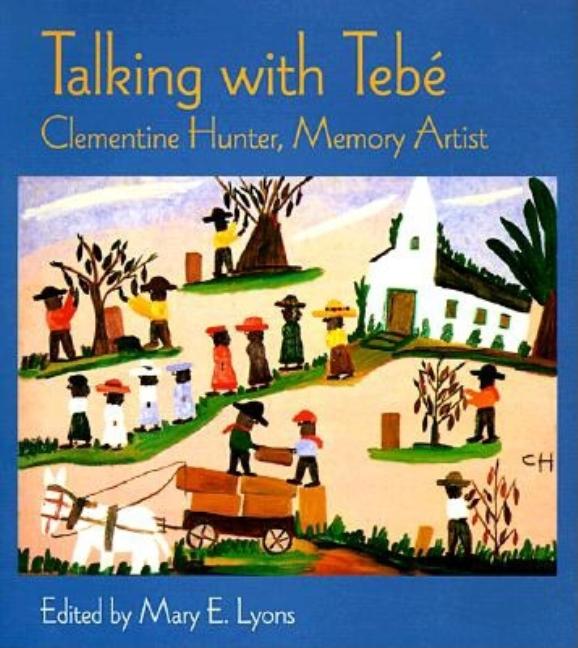Book Description
for Talking with Tebe by Mary E. Lyons
From Cooperative Children's Book Center (CCBC)
Clementine Hunter was a sharp, dynamic, talented artist who lived to be 101. In all those years, Clementine, or Tebé (TEE-bay), as her family called her, never moved from the Cane River region of Louisiana where she was born. Indeed, she rarely even traveled out of the area. But her paintings are in collections across the country, praised for their honest, unsentimental depiction of African American life in the rural south, where, years after the Civil War, many blacks, Tebé included, labored long, hard days year- in and year-out on plantations for wages that would never let them know a life beyond poverty. It is Tebé's own distinctive voice, dancing with expression, that relates the story of her life and her art in this stunning book edited by Mary E. Lyons that includes numerous color reproductions of Tebé's vibrant folk-art paintings. Lyons gathered quotations from magazines, newspapers, and taped interviews to piece together these commentaries by the self-taught artist who had almost no formal schooling, could neither read nor write, but whose head was filled with images that would not leave her alone until she had turned them into pictures. Tebé depicted the harsh life of labor, picking cotton in the fields, cutting cane, gathering figs, and also the ways in which the African American community came together in celebration and mourning, or relaxed in their precious times of leisure. Her paintings were done at the end of long days of work as field laborer or house cook, and even after her fame begin to grow she did not make a living from her art and worried about keeping up payments on the small trailer she moved into after leaving the plantation. Lyons has done a masterful job piecing together Tebé's words in the various chapters, which are arranged around themes in her painting and events in her life, and she has skillfully and sensitively framed those words with an opening editor's note and chapter and a closing commentary in this richly satisfying volume. (Age 12 and older)
CCBC Choices 1998. © Cooperative Children's Book Center, Univ. of Wisconsin - Madison, 1998. Used with permission.


